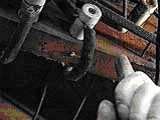|
| |
// A 41 Research Rd, Toronto,
// P(416) 489-1776
// F (416) 421 1306 |
 |
|
| |
|
Home Insurance Alert / Electrical |
Call Us We Can Help... |
|
|
| |


Belvedere uses sub-trade licensed master electricians who are experienced mainly in residential. We can perform all electrical concerns both small and large.
From installation of outlets & switches to re-wiring the complete home, along with installation 100 & 200 amp services.
|
Did You Know:
If your home is over 30 years old, your insurance company may require you to upgrade the plumbing, electrical, and/or heating systems in your home prior to providing you with or renewing your homeowners insurance policy.
Owning or Buying an older home...
If you are looking to purchase or already own an older home that has galvanized steel plumbing,60-amp electrical service, or knob and tube electrical wiring, a wood burning stove or a fuel oil tank, make sure to factor the cost of necessary upgrades or future renovations into your budget.
Your insurance company's concerns with galvanized steel plumbing...
Galvanized steel pipes, commonly installed in homes prior to 1950, have an average life expectancy of 40 to 50 years.Over time, the galvanized steel pipes begin to rust or corrode from the inside out, resulting in reduced water pressure and restricted water flow.
This presents an increased risk of leaks or ruptures occurring in the pipes and the potential for flood damage.Your insurance company may require you to replace galvanized steel piping with copper and plastic piping before providing you with insurance coverage.
|
|
60-Amp electrical service
Insurance companies are concerned that the 60-amp electrical service, common in homes built prior to 1950, possesses the threat of overuse and overheating, potentially increasing the risk of an electrical fire and a subsequent claim.
Before providing you with insurance coverage, your insurance company may require you to upgrade your 60-amp electrical service to 100-amps (the standard for new home construction) or install a switching device that allows for the operation of only one major appliance at a time.
Wood burning stoves can be a hazard.
If they are not installed and used properly, wood burning stoves can pose a serious fire hazard.
To reduce potential risk, your insurance company may require that your wood burning stove be inspected by a certified Wood Energy Technical Training (WETT) technician and certified by the Underwriters' Laboratories of Canada (ULC), Canadian Standard Association (CSA) or Warnock Hersey before agreeing to provide you with homeowners insurance coverage.
Similarly, your insurance company may request that you have your wood burning stove thoroughly cleaned and inspected by a professional sweep or technician at least once a year, prior to renewing your policy. |
|
|
| |
Why your insurance company is asking you to replace your fuel oil tank.
Tanks 25 years or older are highly susceptible to rusting, deterioration and leakage and are considered environmental hazards. If a fuel oil leak occurs and goes undetected, the environmental cleanup for such a situation can be immense.
A pinhole leak can spill 750 litres of oil in 8 hours and have clean up costs ranging from $5,000 to $15,000. Most insurance companies will only insure a fuel oil tank provided it is less than 20-25 years old and has been inspected and certified by a Technical Standards and Safety Authority (TSSA) inspector.
If your oil tank is 25 years or older, your insurance company may require that you remove and replace it with a gas or electrical furnace, prior to providing you with homeowners insurance coverage. Given the wide range of inspection/upgrade requirements that insurance companies may have, it's always best to speak to you insurance representative about your specific situation.
|
| |
Since January 2003 the Electrical Safety Authority has received an increasing number of questions about the safety of knob and tube wiring. In particular, purchasers or owners of older homes are finding that many insurers will not provide or renew coverage on such properties. In some cases, the insurance companies are requiring a total replacement of this wiring prior to providing insurance coverage.

- "After speaking to my insurance man, I was told that 95% of insurance companies will not insure homes with knob & tube wiring"
"What is Knob and Tube Wiring and what concerns are associated with it?"
Knob and tube wiring was installed in houses up until about 1950. This system consists of two wires, one black or hot wire and the other white or neutral to create a circuit. These two single wires are held in place with ceramic knobs and tubes. Knobs are used to clamp the wire to the structural member, while tubes are placed in holes in the structural members to prevent the wire from chafing. In modern household wiring, these two wires are bundled together along with a ground wire in a single plastic sheathing cable that runs through holes in the structural members and is held in place with clamps. While knob and tube wiring is not inherently dangerous, it is old, and its insulation may no longer be intact. Much of this wire is concealed behind walls, ceilings and insulation where its condition cannot be completely evaluated. In addition to the wire covering being deteriorated, these wires are connected by being soldered together and wrapped in electrical tape. After time, this tape either falls off or deteriorates.
LIMITATIONS WITH KNOB AND TUBE WIRING:
-
Usually restricted to a maximum of 60 amp service.
-
The wire is old, and its insulation may no longer be intact.
-
It is not a grounded system making it more hazardous than modern wiring.
-
Two-prong receptacles, restricting the use of small kitchen appliances.
-
It is quite true that in bedrooms, living rooms, and dining rooms, plugging in a TV or lamp poses very little risk. The opposite is true in areas where you may come in contact with water such as bathroom, kitchens, basements, crawlspaces, and outdoors. An ungrounded system in these areas could be potentially hazardous.
-
In fact, a good building practice across North America is to install GFCI (Ground Fault Circuit Interrupters) receptacles in these areas. Furthermore, newer stereo equipment or computers are affected by incorrect polarization - something that this type of wiring cannot prevent.
Call us today and ask how we can help you....
|
| |
|